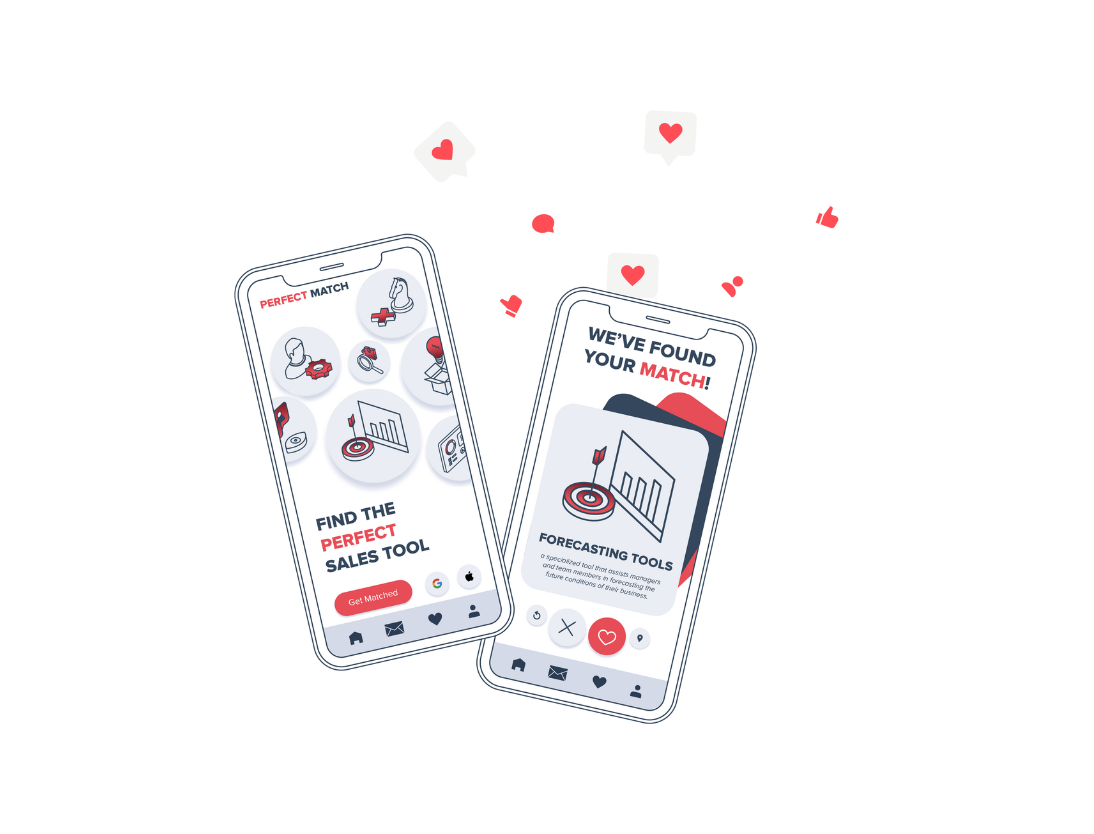At the heart of every successful company lies a winning sales division. A key factor of their success is the structure of the sales team itself, which has to match the organisation's unique profile and goals, directly influencing the sales process and sales cycle.
Is your current sales team structure - whether it involves sales managers, sales representatives, or specialised roles - helping you do your best work and hit those sales goals?
We've put together a few pros and cons relating to some of the more common sales organisational structures, and a few additional tips, to help you ensure you and your team are doing what's best for business.
Why is choosing the right sales team structure important?
Choosing the right sales team structure is crucial for the success of any sales team. By segmenting your team into different roles or departments, you can ensure that each individual knows their specific responsibilities and can focus on playing to their strengths.
This leads to higher sales performance and helps improve overall team synergy and collaboration.
For example, having inside sales specialists focus on lead generation while field sales professionals work on closing deals can streamline your sales process and make it more efficient. Additionally, using business development reps (SDRs), and account executives to split up tasks can help prioritise opportunities and increase conversion rates.
With more companies moving towards remote work and work-from-home arrangements, sales organisational structures have had to adapt as well.
Remote work requires a different level of communication and collaboration, so it's important to review your current structure and see how it might need to be adjusted for a remote setting.
This could mean implementing new tools for tracking performance metrics or establishing frequent check-ins with team members to ensure everyone is on the same page.
It's essential to be flexible in these changing times and continue to evolve your sales organisation structure to meet the demands of a remote workforce while still driving high levels of sales performance.
The three successful sales structures you need to know about
1. The Pod — “Two minds are better than one”
The Pod structure is team-focused, but instead of relying on individual performance like an assembly line model, you have a whole team looking after your customer throughout their entire customer journey with your company.
Each “team” or “Pod” is forged from members who play different roles. For example, a typical pod could include 3x Sales Development Reps (SDRs); 2x Account Executives (AEs), and 1x Customer Success Representative.
This structure is my personal favourite, as customer-centricity is at its core. Using the Pod structure ensures reliability and creativity from tapping into multiple minds on any single customer journey.
Pros:
- Your team relies on each other, which makes the entire customer journey the goal, with individual performance coming in a close second.
- Individual pressure is understood within the Pods, so there is a high level of internal empathy which creates less friction within the team and better communication both internally and with prospects.
- Pods are more flexible, independent, agile, and adaptive than other team structures.
Cons:
- Individual pressure puts you out of your comfort zone (a breeding ground for growth). With the Pod structure, there is less individual pressure and competition, which can translate to less opportunity for growth.
- The Pod environment creates less specialisation, as each member becomes a “jack-of-all-trades”.
- The Pod's versatility allows you to implement it in various situations, so when your sales team has matured, you might be looking to dive into new markets and verticals with aggressive and competitive companies. As long as you put systems in place to mitigate its weaknesses, it could be the perfect match for your business.
2. The Assembly Line — “The reliable powerhouse”
The Assembly Line is made up of a team that's broken down by function into four different groups, namely:
- The lead generation team
- Sales Development Representatives (SDRs)
- Account Executives (AEs)
- Customer success teams
The key is to allow each individual to specialise in their function. This way, the customer enjoys an “under-promised and over-delivered” experience as they're passed on through the funnel. The Assembly Line team structure also makes it easier to track the performance of each individual as each function is so specialised.
Pros:
- If you're looking for predictability, the Assembly Line is the best choice as a proven, successful sales structure in your organisation.
- Because functions are so specialised, it makes it easier to isolate problems in the funnel.
- The ability to specialise allows the team to create quality work and increases individual effectiveness and efficiency.
Cons:
- Because of the specialisation, you're going to need more “firepower” to cover those different functions.
- Friction can be generated when handing the customer off from one function in the funnel to the next.
- An individual's goals and targets are slightly distant from the company's overall “big picture” as theirs relates to their specialisations.
The Assembly Line is a reliable powerhouse. It's good for reducing the complexity of your sales cycle, increasing sales efficiency, and scaling your team. As such, this structure sits well with most start-ups — but remember, the higher your annual customer value, the better a specialised sales team will be.
Enrolling your company into a relatively complex structure from the start means it will only get more complex as you start to scale. The Assembly Line is perfect for getting a handle on that complexity so you ensure a reliable and repeatable process for nurturing those leads.
3. The Island — “Sometimes simple is best”
The Island is the most basic of the organisational structures, as there's very little organising that goes into it. It lends itself to a more traditional sales style — “sell-or-die”. If you're on a team subscribing to this structure, here's what you need to know:
Pros:
- The structure is so basic that little oversight is needed on a one-on-one basis with your team. It's great for simple sales processes.
- If you have a simple call-to-close process (like one or two calls maximum), the Island may be your best choice.
Cons:
- The sales environment this structure fosters is highly stressful and aggressive.
- You always want to represent your company in the best light. The Island offers little control of how your company's image is portrayed, as each individual's sales style determines people's perception of your brand.
The Island is a successful sales structure for low-complexity companies operating in a highly competitive and well-established market with a high-transactional sales process. If you're a start-up looking to lower that ‘new market entry' stress, this isn't the structure for you.
The importance of company culture in driving sales success
Matching your sales team to the best structure for your context should achieve two things:
- You'll exceed customer expectations and earn maximum results.
- You'll CREATE the most suitable culture for your organisation.
It's important to align your sales structure with the type of company and culture you're trying to create. Here at Huble, we value:
- The fact that we are HUMAN
- Embracing the opportunities in CHANGE
- INNOVATION (enough said!)
- Solving for the CUSTOMER
- Being TEAM-PLAYERS
Related: The average person spends about 90,000 hours at work. It's worth being selective about the company you work for, and at Huble, our values define us. Dig deeper into what we stand for and find out why Huble might be the right fit for you, here.
The Huble sales team structure leans more toward “the Pod''. However, we don't have customer success members within our Pods because we foster a more consultative atmosphere, rather than being strictly salespeople.
The traditional Pod structure is more relevant for software sales teams that don't sell a professional service, where it wouldn't make sense to have consultants included inside each Pod.
As a member of the Huble sales team, I know first-hand what difference an effective team structure makes. The fact that our culture revolves around consulting, along with our ongoing internal training program, has completely changed the way I previously perceived the sales position.
Identifying good-fit companies with potential problem areas on a broad scale is comparable to that of a general practitioner attending to their patients.
We have to diagnose the problem and find a solution for both the symptoms and the cause, which can get complicated very quickly. I thoroughly look forward to seeing how we continue to grow and innovate in the field!
How Huble can help you streamline your sales success
At Huble, we understand that the backbone of any successful business is an efficiently structured sales team, optimised to meet and exceed your unique business goals and challenges.
Our expertise in sales consultancy services is designed to help you find the perfect sales team structure that aligns with your organisation's needs and optimises your sales processes for peak performance.
Whether you're exploring the dynamic Pod model, considering the efficiency of the Assembly Line, or contemplating the simplicity of the Island structure, our team is equipped with the knowledge and tools to tailor a solution that drives your sales success.
We dive deep into understanding your business, market segment, and customer base to recommend and implement sales strategies that enhance your sales team's performance.
Speak with our team today to learn more about how Huble can elevate your sales processes and help you achieve your sales goals.
.png)












